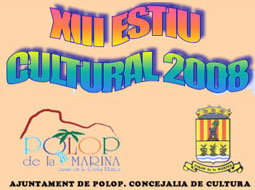No you don’t. Versions of MySQL lower than 4.1 do not have built in UTF-8 support. However, Joomla! 1.5 has made provisions for backward compatibility and is able to use UTF-8 on older databases. Let the installer take care of all the settings and there is no need to make any changes to the database (charset, collation, or any other).
What is the FTP layer for?
The FTP Layer allows file operations (such as installing Extensions or updating the main configuration file) without having to make all the folders and files writable. This has been an issue on Linux and other Unix based platforms in respect of file permissions. This makes the site admin’s life a lot easier and increases security of the site.
You can check the write status of relevent folders by going to »Help->System Info» and then in the sub-menu to «Directory Permissions». With the FTP Layer enabled even if all directories are red, Joomla! will operate smoothly.
NOTE: the FTP layer is not required on a Windows host/server.
Only one edit window! How do I create «Read more…»?
This is now implemented by inserting a Read more… tag (the button is located below the editor area) a dotted line appears in the edited text showing the split location for the Read more…. A new Plugin takes care of the rest.
It is worth mentioning that this does not have a negative effect on migrated data from older sites. The new implementation is fully backward compatible.
Can Joomla! 1.5 operate with PHP Safe Mode On?
Yes it can! This is a significant security improvement.
The safe mode limits PHP to be able to perform actions only on files/folders who’s owner is the same as PHP is currently using (this is usually ‘apache’). As files normally are created either by the Joomla! application or by FTP access, the combination of PHP file actions and the FTP Layer allows Joomla! to operate in PHP Safe Mode.
What happened to the locale setting?
This is now defined in the Language [lang].xml file in the Language metadata settings. If you are having locale problems such as dates do not appear in your language for example, you might want to check/edit the entries in the locale tag. Note that multiple locale strings can be set and the host will usually accept the first one recognised.
Why does Joomla! 1.5 use UTF-8 encoding?
Well… how about never needing to mess with encoding settings again?
Ever needed to display several languages on one page or site and something always came up in Giberish?
With utf-8 (a variant of Unicode) glyphs (character forms) of basically all languages can be displayed with one single encoding setting.
How do I upgrade to Joomla! 1.5 ?
Joomla! 1.5 does not provide an upgrade path from earlier versions. Converting an older site to a Joomla! 1.5 site requires creation of a new empty site using Joomla! 1.5 and then populating the new site with the content from the old site. This migration of content is not a one-to-one process and involves conversions and modifications to the content dump.
There are two ways to perform the migration:
How do I localise Joomla! to my language?
General
In Joomla! 1.5 all User interfaces can be localised. This includes the installation, the Back-end Control Panel and the Front-end Site.
The core release of Joomla! 1.5 is shipped with multiple language choices in the installation but, other than English (the default), languages for the Site and Administration interfaces need to be added after installation. Links to such language packs exist below.
XIII Estiu Cultural 2008
 El Ayuntamiento de Polop y la Concejalía de Cultura organizan la XIII edición del Estiu Cultural 2008.
El Ayuntamiento de Polop y la Concejalía de Cultura organizan la XIII edición del Estiu Cultural 2008.
